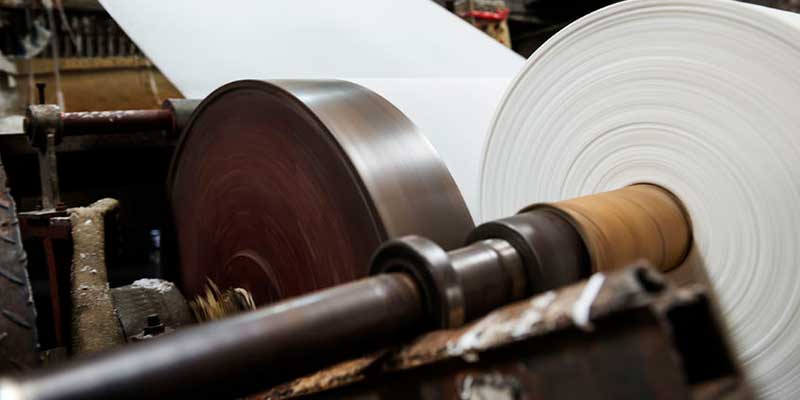The pulp and paper industry is a large user of water, which can have profound environmental impacts.
Water-reuse and waste-to-energy technologies can lessen environmental impact
The pulp and paper (P&P) industry is one of the largest users of water in the industrial economy of the United States. It requires an average of 54 m3 of water to produce a metric ton of pulp or paper, and almost all phases of manufacturing require water. On the downstream side, P&P mills also create difficult-to-manage wastewater and sludge, causing environmental issues and challenges for wastewater treatment and sludge disposal.
About 85% of P&P industry water use is for process water, which is contaminated during the manufacturing process with sediments, effluent solids, chlorinated organic compounds, organic halides (AOX), and chemical oxygen demand (COD) and biological oxygen demand (BOD) contaminants. On-site treatment is imperative in most cases due to the volume of wastewater and amount of contaminants. Common treatment technologies include clarification for removal of solids and particles, and biological treatment for removal of biodegradable organics and for diminishing of toxicity. Sometimes the effluent is further treated with UV disinfection, and membrane, ion exchange, and activated carbon systems.
Pressures on the P&P Industry
In recent decades, costs associated with environmental impact and regulation, sourcing fresh water, and the increasing price of energy have all exerted increasing pressure on the industry to reduce its water footprint and increase water efficiency.
One industry practice that has an important impact on the environment is overpumping aquifers, which has caused measurable ground subsidence and saltwater aquifer intrusion in the Eastern portion of the state. Virginia recently instituted curbs on the practice. In late 2017, it reached an agreement to grant groundwater withdrawal permits to two of the state’s largest industrial groundwater users — WestRock paper mill in West Point and International Paper’s Franklin mill — that mandate pumping cuts of up to 52%. The WestRock mill, the largest groundwater user in the state, was cut to as little as 7.3 million gallons daily, down from 20 million, although it may be permitted up to 16 million gallons if it meets additional requirements.
Wastewater Reuse and Waste-to-Energy
The industry often responds to similar regulatory pressures with increased recycling of wastewater. Although new treatment technologies, and reuse and resource recovery strategies offer workable solutions, adding water reuse systems to paper mills can be challenging. Substances that can harm equipment and degrade product quality can build up in reused process water, so reuse systems must be customized for a specific mill and its product.
Still, the reuse of wastewater can have a significant impact on the environment. For instance, effluent purified for reuse can be used to recharge aquifers, which is particularly important in coastal zones where saltwater intrusion is a problem.
Anaerobic Digestion for Energy Production
Waste-to-energy systems can be useful for treating paper mill effluent. Along with improving the quality of a plant’s discharge effluent, the systems use anaerobic digestion to convert the effluent’s organic matter to biogas, which can be used to power the plant’s operations.
For example, when Italian company Consorzio Cartiere di Tivoli needed to improve the quality of its effluent to meet legal standards, Fluence custom-built a waste-to-energy system that creates biogas that the mill uses to fuel its boiler, generating steam for use in production. The system lowered energy use by 8,000 kW daily and brought the quality of effluent into compliance.
Around the world, the range of strategies and technologies is rapidly expanding to respond to the water issues faced by this water-intensive industry.

